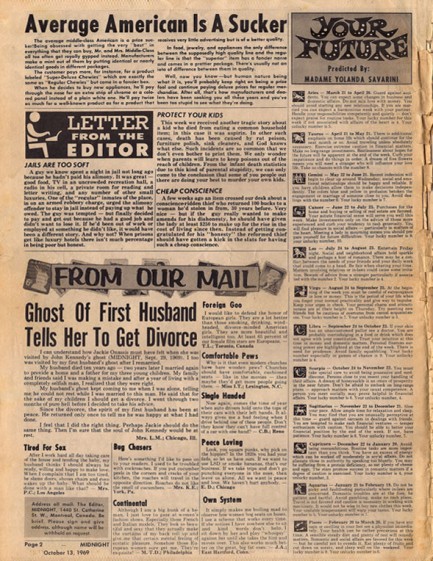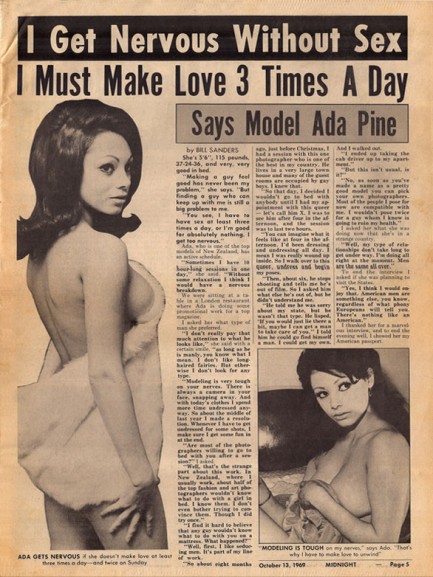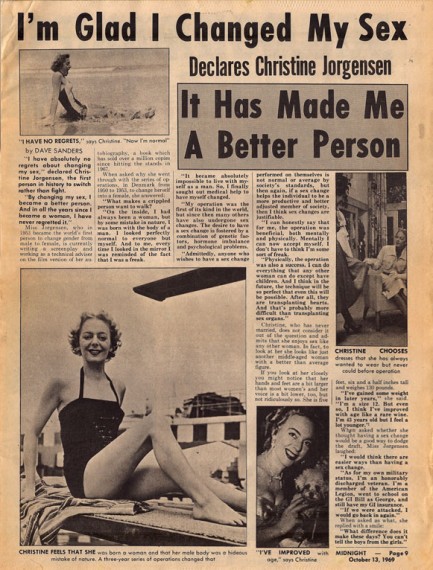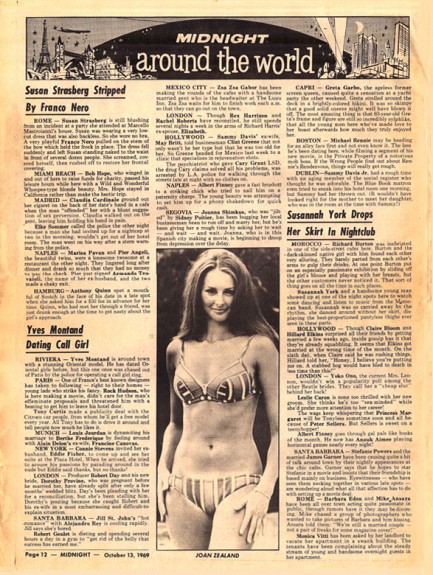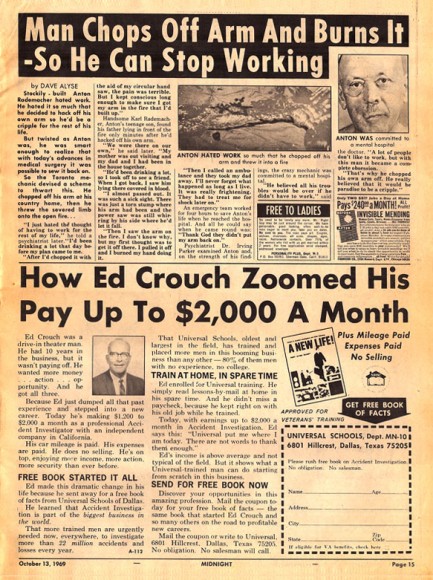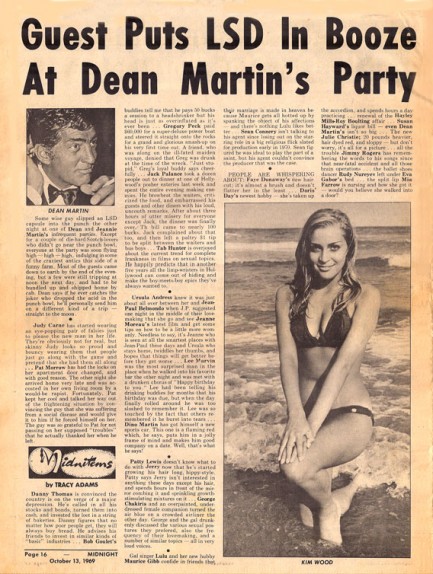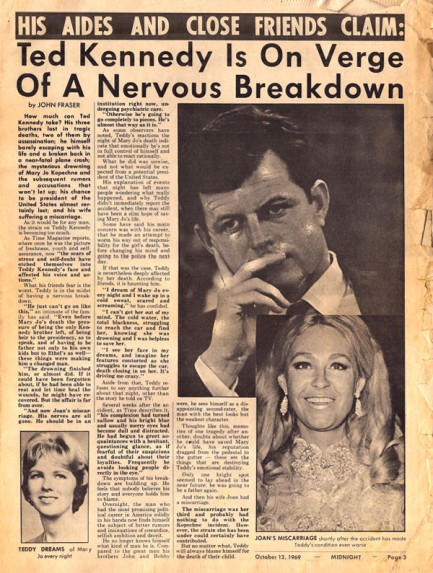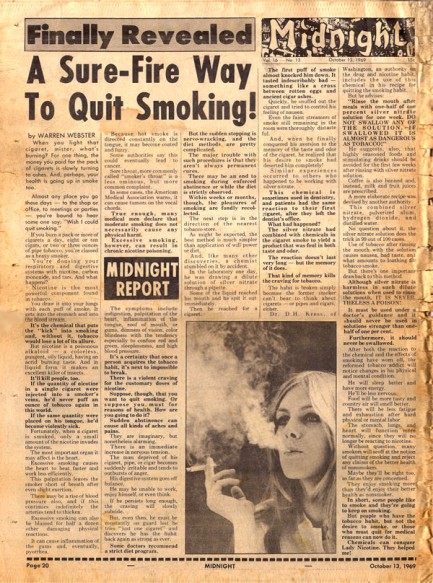| Vintage Pulp | May 20 2013 |


Oh, the poor National Police Gazette. By 1974 it was impossible for the editors to keep claiming Hitler was still alive and hiding out in Argentina. If he’d ever been there he was long dead. Castro was still around, of course, but it was pointless to keep pretending the U.S. was going to send an armada to take back Cuba. Mao was a useful foil for a few years, but somehow he just didn’t resonate the same way for readers. So the magazine turned its focus to pettier intrigues, dogging the Kennedy clan and hoping to move issues by featuring bikini models on its covers. How the mighty had fallen. Launched all the way back in 1845, the oldest magazine in America was now uninspired and out-of-touch with 1970s readers. In this entire issue only a few pages were even worth scanning. Teddy Kennedy, Susan Shaw, Felicity Devonshire, Sliwka… and killer catfish, all below.
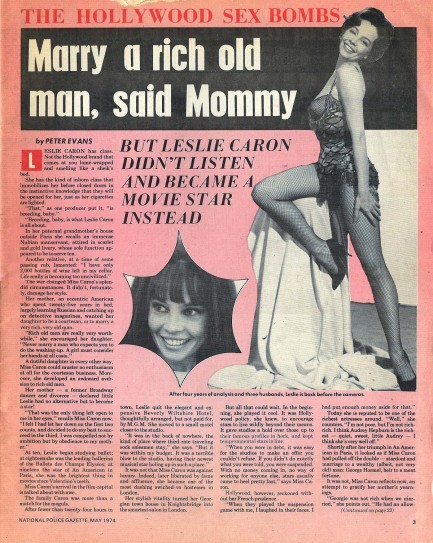
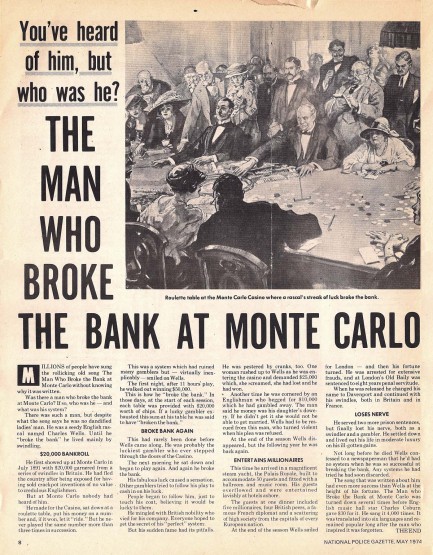
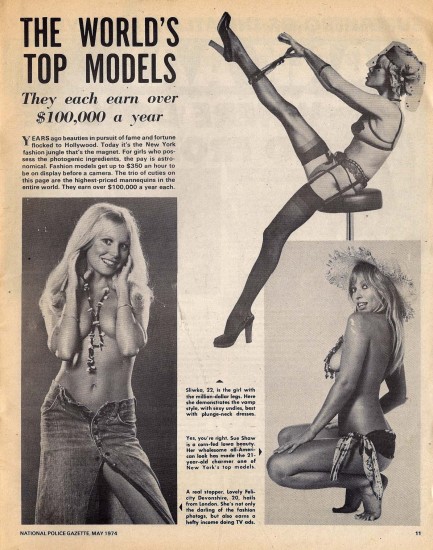
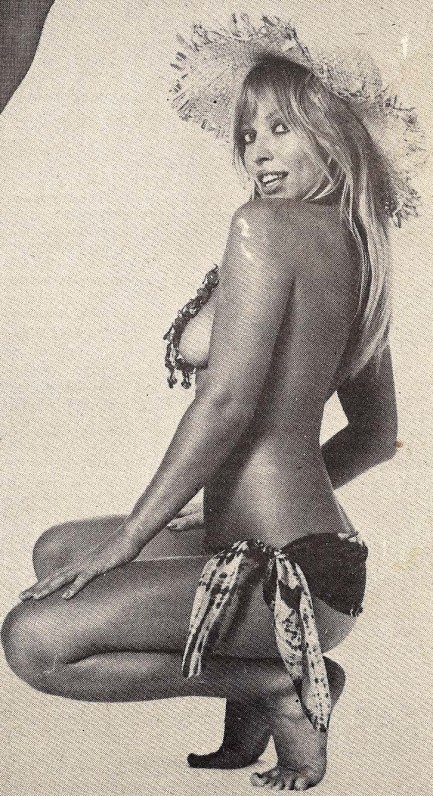
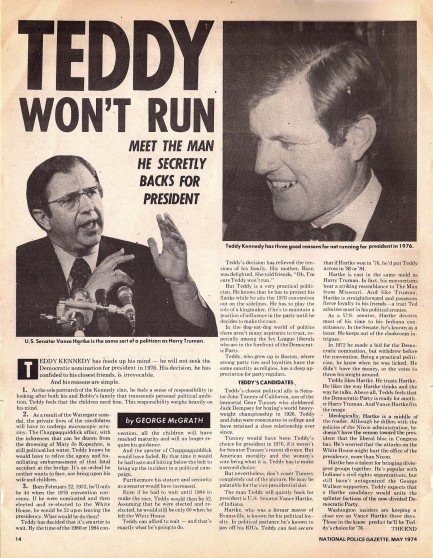
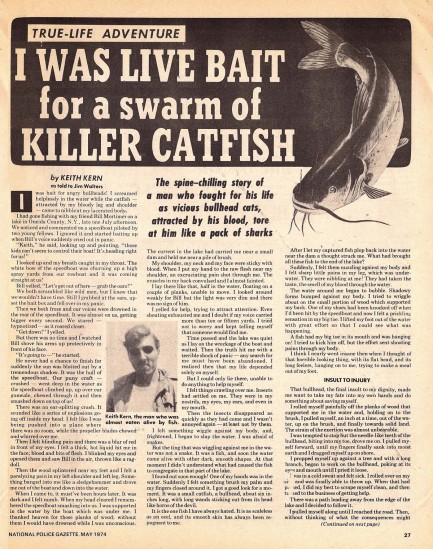
| Vintage Pulp | Politique Diabolique | Feb 4 2012 |

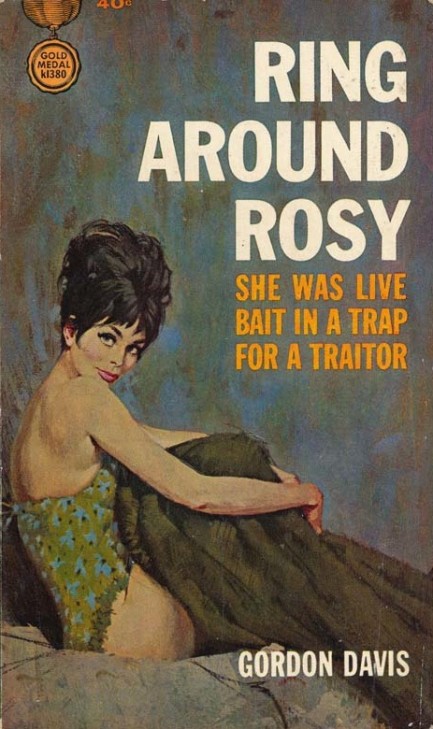
Today we have a cover for the 1964 espionage novel Ring Around Rosy, and normally, what would be of the most interest here is yet another perfect piece of art by Robert McGinnis, but in this case we have an author whose life may have been even more rife with danger and intrigue than those of his characters. Many of you probably already know that Gordon Davis was in reality E. Howard Hunt, who was involved in the Watergate Hotel scandal which led directly to the toppling of Richard Nixon’s presidency, a landmark moment in the American psyche because it represented a loss of political innocence for millions of citizens. But that all came later, when Hunt was pushed unwillingly into the light after the bungled Watergate operations. What makes him fascinating is everything that came before.
E. Howard Hunt was a dedicated writer in his early years, and after winning a Guggenheim fellowship, went on to publish as the aforementioned Davis, as well as Robert Dietrich, and David St. John. He joined the CIA in 1949, and was stationed in Mexico City along with William F. Buckley. While there, he helped plan the overthrow of Guatemala’s president Jacobo Arbenz, which brought about unrest that funneled into a civil war in which 200,000 people were killed, about 90% of them civilians. A few years later Hunt helped to create a Cuban government-in-exile that would take over that island after Fidel Castro was ousted by U.S.-backed Bay of Pigs insurgents. The invasion didn’t come off as planned, though, and the fallout was damaging enough that Hunt needed to rehabilitate his career.
He took a position as chief of the CIA’s illegal domestic spying branch the Domestic Operations Division shortly after its formation in 1962 by John F. Kennedy. The idea behind the Division was to spy on enemies inside the U.S., which ostensibly meant acting against foreign embassies that might be harboring spies, but in a classic—and inevitable—example of mission creep, pretty soon the Division began illegally spying on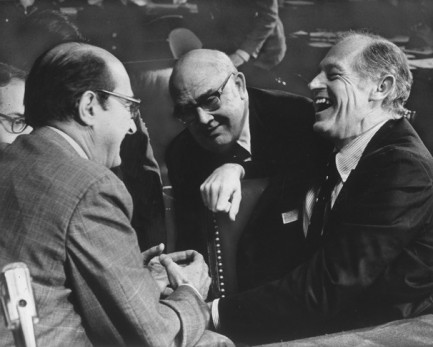 American citizens, specifically civil rights activists. After a couple of years Hunt was re-stationed in Mexico City, where sources claim he had dealings with Lee Harvey Oswald in the time leading up to Kennedy’s assassination. Hunt categorically denied ever meeting Oswald, though he later made revelations regarding Kennedy. In any case, being on the government payroll wasn't what he wanted to do anymore—he never got over his anger at Kennedy’s refusal to invade Cuba or overthrow Castro—so he decided to get into the private sector.
American citizens, specifically civil rights activists. After a couple of years Hunt was re-stationed in Mexico City, where sources claim he had dealings with Lee Harvey Oswald in the time leading up to Kennedy’s assassination. Hunt categorically denied ever meeting Oswald, though he later made revelations regarding Kennedy. In any case, being on the government payroll wasn't what he wanted to do anymore—he never got over his anger at Kennedy’s refusal to invade Cuba or overthrow Castro—so he decided to get into the private sector.
This eventually led to him becoming a member of Richard Nixon’s Special Investigations Unit, aka the White House Plumbers, which were both fancy names for the collection of men who were the President’s secret fixers. This was exactly the sort of off-the-books work Hunt had been seeking. It allowed him to remain in the black ops game, but freed him from accountability to layers of career bureaucrats. Under Nixon’s direction and that of White House Special Counsel Charles Colson, Hunt broke into various residences—in violation of both property and spying laws—looking for dirt on people such as reporter Daniel Ellsberg and politician Teddy Kennedy. He was also involved in disinformation campaigns, such as forging fake cables suggesting that John F. Kennedy had ordered the assassination of foreign officials, and trying (but failing) to link a would-be assassin to Democrats by planting George McGovern campaign material in the house of Arthur Bremer, the man who shot conservative politician George Wallace.
We’ve drifted pretty far away from the subject of Ring Around Rosy (which by the way is an adventure concerning Cuba, as were several of Hunt's books), but let’s drift a bit farther, and make this point: isn’t it fascinating that in an age in which so many conspiracies have been documented and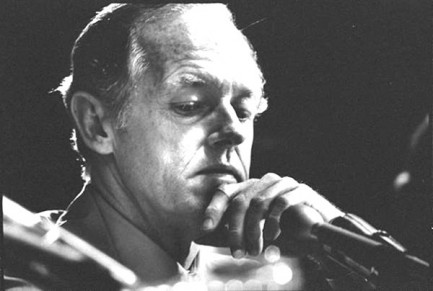 verified, people are still afraid to believe behind-the-scenes machinations are what really make the planet go ’round? Hunt's dirty tricks are all a matter of record, and had profound effects on international affairs, yet many would like to believe he is a rarity. But whether we're talking about hushed meetings in political backrooms or secret get-togethers between bankers at private clubs, conspiracies are the engine of the world. It isn’t a nice realization, but it’s a logical one.
verified, people are still afraid to believe behind-the-scenes machinations are what really make the planet go ’round? Hunt's dirty tricks are all a matter of record, and had profound effects on international affairs, yet many would like to believe he is a rarity. But whether we're talking about hushed meetings in political backrooms or secret get-togethers between bankers at private clubs, conspiracies are the engine of the world. It isn’t a nice realization, but it’s a logical one.
Hunt wrote novels throughout his black ops years, but as time wore on often used his literary gift to grind axes, modeling characters after men he hated. For example, JFK appeared thinly disguised in the 1972 political potboiler The Coven, in which a youthful, charismatic, Catholic presidential candidate is a secret Devil worshipper (Graham Masterton later used a similar idea in his spectacular horror novel The Hell Candidate with Ronald Reagan as his model). The quality of Hunt’s fiction had declined since his Guggenheim fellowship days, according to many critics, but his name and background guaranteed sales, and still does today (as any Hunt-related internet comment chain, with their pronouncements about his “real deal tough guy” qualities, makes quite clear).
At the end of his life, Hunt dropped a bombshell by confessing to involvement in a conspiracy to kill John F. Kennedy. He described himself as a “benchwarmer” in the plot, i.e., somebody to be brought in if the first team failed, and named everyone involved. The confession was made to his son, which gave rise to questions about both veracity and motive. But if Hunt had confessed on the front page of the Washington Post can we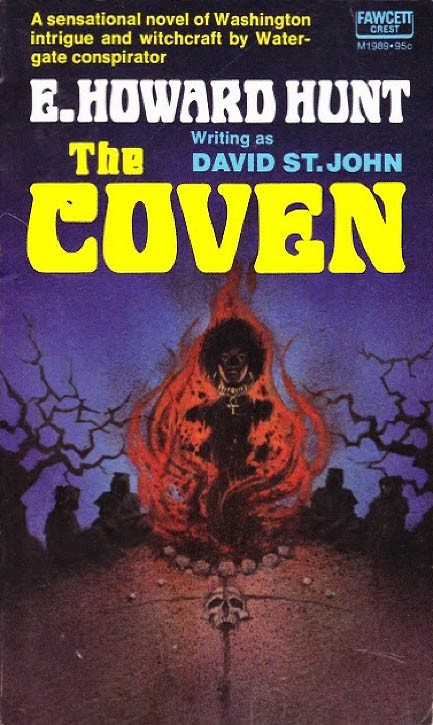 really doubt that there would still be droves of people unwilling to accept it? It makes sense, though. If Watergate stole the political innocence of millions of Americans, proof of an assassination plot by members of the U.S. government against their own president would be a national cataclysm. So Hunt’s confession is forgotten, while everything else he ever did, survives.
really doubt that there would still be droves of people unwilling to accept it? It makes sense, though. If Watergate stole the political innocence of millions of Americans, proof of an assassination plot by members of the U.S. government against their own president would be a national cataclysm. So Hunt’s confession is forgotten, while everything else he ever did, survives.
| Vintage Pulp | Mar 28 2011 |

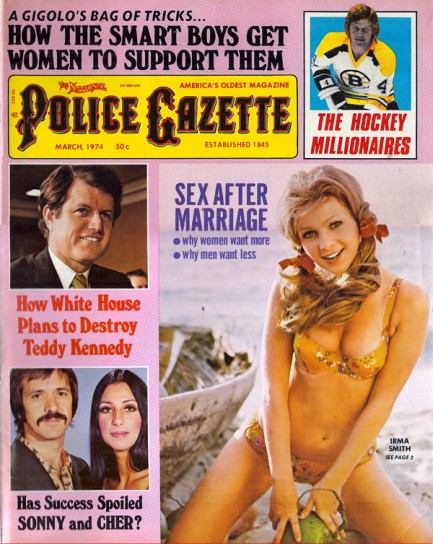
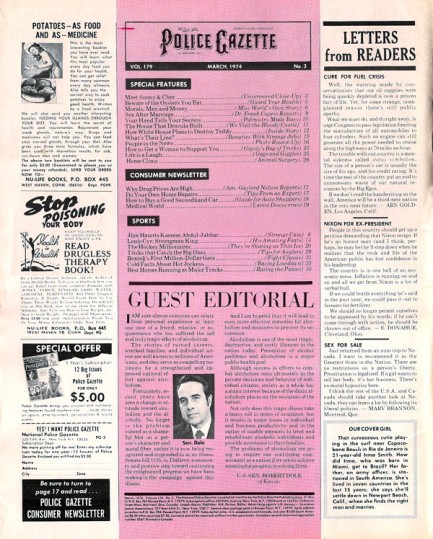
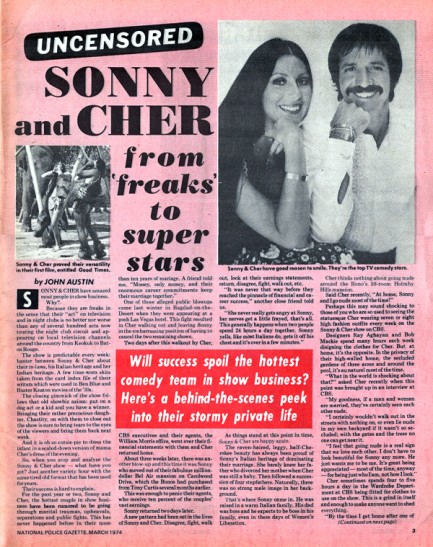

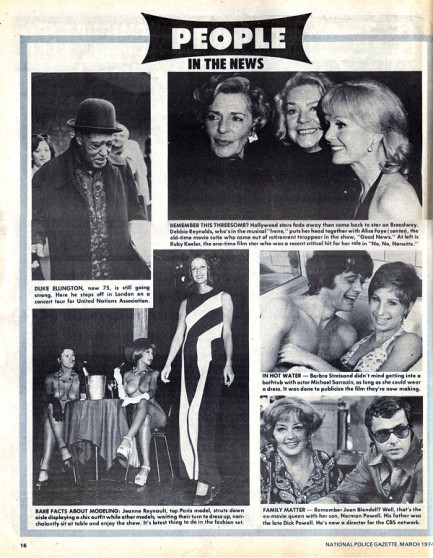
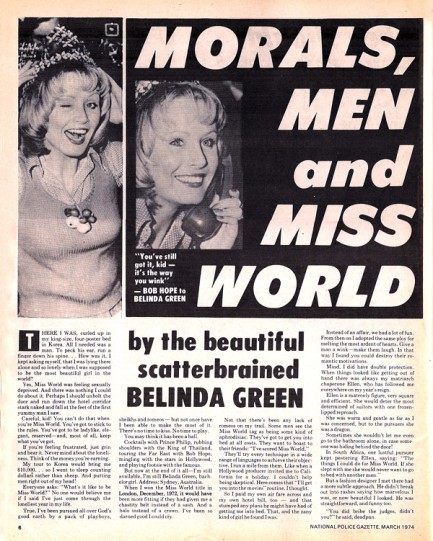
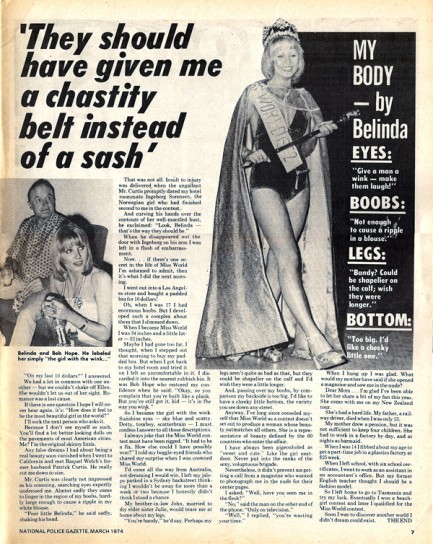
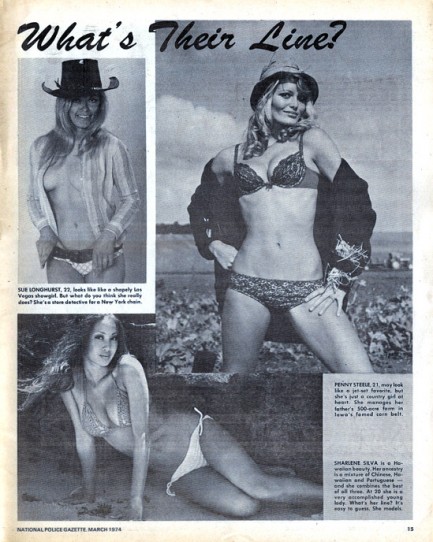
Above are the cover and seven interior pages from a National Police Gazette published in March 1974, two years before the century-old magazine folded. In retrospect it’s easy to see one of the problems the Gazette was having: while the graphics, printing, photo quality and paper stock had all improved over the years, the magazine had lost its visual impact. At the time, editors must have thought they had made the magazine more attractive, but can the above cover really compare to this one, or this one, or this one? Successful competitors like National Enquirer featured little or no color, but the immediacy of their covers was hard to resist.
Part of the rationale behind the Gazette’s change may have had to do with its decades-long circulation decline, prompting them to do away with photo-illustrated covers in favor of cheaper promo shots. Or perhaps their longtime cover artisans simply aged and retired, taking their singular talents with them. Or perhaps new editors came aboard and decided to modernize—the default move of managers who have no aesthetic clue. Who knows? We just know that the results speak for themselves. But we’ll keep collecting even these late-period Gazettes because they’re useful in presenting a complete record of the publication. We’re going to go out a limb and say that we now have the largest compendium of Gazette pages on the internet. See them by clicking keywords “Police Gazette” below.
| Intl. Notebook | Oct 13 2010 |

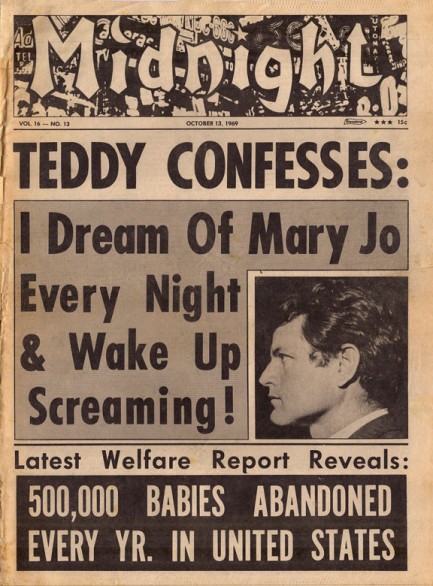
Midnight, like other tabloids, learned quite well that a Kennedy could move product. Thus their editors splashed a Kennedy, or Jackie Onassis, on the cover of their paper at pretty much every opportunity. On the above issue from today in 1969, editors tell us that Teddy Kennedy is at the end of his rope. Apparently, after enduring the assassination of two brothers, a plane accident in which he broke his back, his wife Joan’s miscarriage, and a car accident on Chappaquiddick Island in which he drove into a pond and his companion Mary Jo Kopechne drowned, Kennedy was not in a good frame of mind. Go and figure. Midnight claims to have gotten this statement out of him: “I see [Mary Jo Kopechne’s] face in my dreams and imagine her features contorted as she struggles to escape the car, death closing in on her.” And this: “I dream of Mary Jo every night and wake up in a cold sweat, scared and screaming.” Did Midnight really scoop every paper in the land and get these anguished quotes? Well, no—this is the same paper that wrote two weeks earlier that John Kennedy’s ghost was haunting Jackie Onassis. So we take their claims of unfettered access to the Kennedy clan with a grain of salt. However, we have three more issues of Midnight with Kennedy themes, so maybe they can still convince us. We’ll be sharing those issues down the line.
